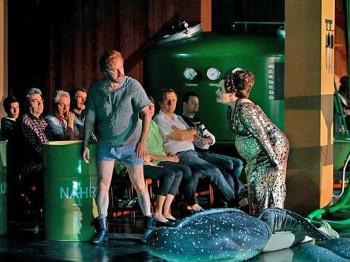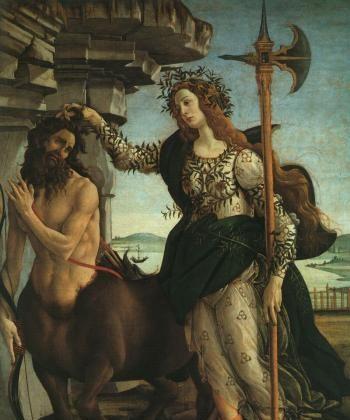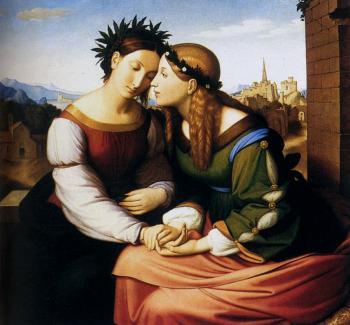NEW YORK—The Artek ensemble’s mission is to promote ancient music of the Renaissance and Baroque periods, by playing on authentic instruments like the lute, theorbo, violone, and lirone. Artek is an acronym for “Art of the early keyboard.” The group’s 14 musicians, armed with these unusual instruments, performed in the Immanuel Lutheran Church in Manhattan recently.
Most of the instruments the group plays are replicas that were built in the 18th century due to the fact that only few of the original instruments have survived. These surviving instruments are museum pieces for reasons of conservation and serve as models for new ones.
When musicians fall in love with old music, they have a wide range of instruments to choose from to specialize in or study. The lute, for example, existed in many sizes and tunings, and even the number of strings could differ, explained Daniel Swenberg, who played the theorbo and lute at the concert.
The theorbo is an exotic-looking giant guitar with two necks and two sets of relatively thick strings. The size of the instrument is needed to realize its full and pleasant bass sound—it’s used for the basso continuo part.
To the joy of the audience, the performers changed instruments frequently between pieces. A characteristic of the Renaissance madrigals is the instrumentation based on a basso continuo line. Yet the old composers usually didn’t dictate which instruments should play the piece. Whoever had the appropriate tonal range could perform. Artek, therefore, took the opportunity to present several continuo instruments, conjoining their timbres to create many different tone colors in changing instrumentations. A compelling example was a trio of two lutes accompanied by a harp, the latter adding a brilliant and full lower voice to the delicate tune.
Even more than with Baroque music, Renaissance music offers many possibilities for experimentation. From a modern point of view, the frame of the musical form and harmonics to which the composers adhered seems strict, but the creativity within is amazing and worth investigation. Whether merry or melancholic, presenting chaste or frivolous fantasies, the madrigal composers illustrated each line carefully—sometimes even single words of the lyrics had a musical metaphor.
The Composers and the Singers
The theme of the evening was love with all its ups and downs, explained Gwendolyn Toth, the director of Artek. But behind that idea was the wish to highlight often neglected composers. Although Monteverdi dominates the repertoire today, this performance contained works mostly by Sigismondo d’India (c.1582–c.1629), combined with fewer pieces by Carlo Gesualdo (1560–1613) and Luca Marenzio (c.1553–1599) among others.
Madrigals are songs of secular content that are mostly composed for several voices and show the peculiarity that every stanza is musically different, having either a new melody or new arrangement. The monody has a similar form but is performed by a single lead voice with accompaniment; it is therefore regarded as the precursor to the aria. The madrigal and monody, with their focus on storytelling, dramatic qualities, and vocal virtuosity, paved the way for the Italian opera. Monteverdi’s “Orfeo” is regarded as the first work of this genre.
The singers’ skillful voices coupled with their enthusiastic playfulness brought the old Italy back to life. Passion and humor alternated. The transparent arrangements of the madrigals require a wide vocal range and enormous flexibility of every voice. These excellent singers mastered the challenges as virtually one voice.
Soprano Jessica Tranzillo and mezzo-soprano Barbara Hollinshead had perfectly matching timbres and flawlessly wove their legato passages as with one breath. They also appeared as expressive soloists.
The men included countertenor Biraj Barkakaty, tenors Philip Anderson and Michael Brown, and last but not least, bass-baritone Peter Becker, who sang with a full, voluminous bass and displayed enormously flexible coloratura passages.
Of note were two poems that were given different treatments by two different composers. What made listening even more exciting was the fact that d’India’s “Hor che’l ciel” was first heard as a monody for solo soprano. Then, in the Monteverdi version, the ensemble sang first in almost motionless, dark chords about the nightly silence of the sea, and then in stirring scales about the inner torment of lovesickness that kept the poet Petrarca awake—this highlight concluded the intelligent and entertaining program.
For information about Artek’s upcoming concertos, please see: www.artekearlymusic.org




Friends Read Free